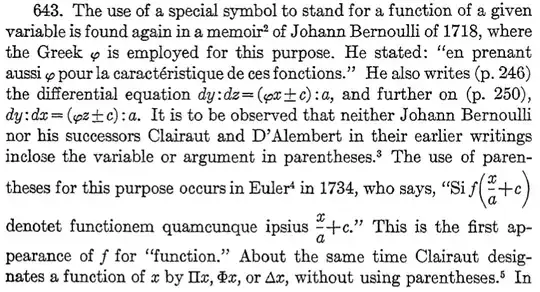What are the historical origins of the $f(x)$ notation used for functions? That is when did people start to use this notation instead of just thinking in terms of two different variables one being dependent on the other?
Any references would be appreciated.
